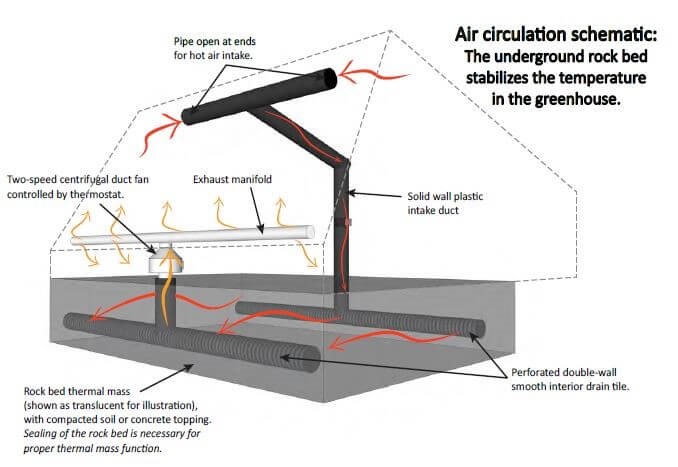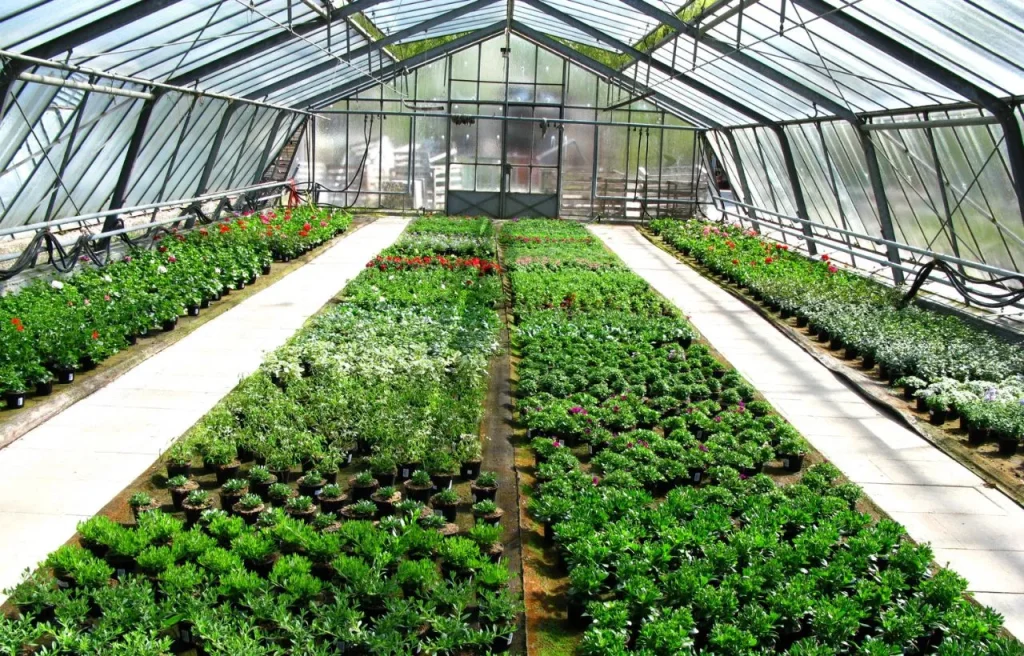Hi, my garden folks. How are you doing? Are you worried about the garden harvest and blooms? Don’t worry. You have deep winter greenhouse technology to protect your garden activities. Making a snowman, snow all around, but yet you can have a greener touch because of the deep winter greenhouse (DWG). So, let’s breakdown down what is deep winter greenhouse technology. How much it costs, what’s the basic design of the DWG, and course some common facts and benefits of it? Look at the useful Deep winter greenhouse.
Everything you need to know about a greenhouse
well, we all know that greenhouse is a house made of glass of any shape that can hinder the outer cold temperature to enter the house and the best use of a greenhouse in the temperate region is to protect the green plants, fruits, and vegetables. With the use of a greenhouse, you can grow whatever you want to in the heavy snowfall. And yes, this greenhouse is of different kinds and shapes. The outer envelope or may I say the structure of a greenhouse is made of glass or as usual plastic.
An interesting fact about greenhouse plants is their temperature. However, according to temperature, the greenhouse can be either a cool temperature or a hot temperature greenhouse. This temperature is the nighttime temperature of the greenhouse in which the plants can thrive.
If you look back and want to know the history of greenhouses, then it has been evolving since the Roman times 14th century. Since then, people are using this well-designed structure to grow foods in cold temperatures. So, the concept of the greenhouse is very ancient and useful for the cold region people.
Again, if we segregate the greenhouse based on shapes then it has lots of varieties. There are dome shapes, tunnels, flat arches, skillion, and other structures. If you consider which greenhouse is well-equipped then there are high-tech, low-tech, and medium-tech greenhouses.
- High-tech greenhouse: Well, high-tech means there must be some rich technology, this kind of greenhouse has high production yield, automated systems, and yes high installation cost.
- low-tech greenhouse: It is cost, and user-friendly and disease control can be somehow a difficult task to do. But initially, if you are setting up a greenhouse then it could be the one.
- Medium tech greenhouse: It is in between the medium and high-tech greenhouse. You can hope to have an optimum level of production and less cost.
What is a Deep Winter greenhouse (DWG)?
It is a category of greenhouse. This greenhouse is good to go with the regions that have a very short growing season and a rude, cold climate. As usual, it is a greenhouse built with glass and allows passive solar radiation. Now, what is passive solar energy? This solar energy is the direct sunlight for sunlight use, reflects, and ultimately stores that heat in the winter. And sometimes it can hinder the summer rays from entering. Mostly in the higher latitude regions like Alaska, North Dakota, Minnesota, Canada, and the Australian southern part.

So, the DWG is not indifferent to the regular greenhouse. The DWG has a glass structure only on one side and that is on the south side. On the North side, the greenhouse captures all the heat and got reflective walls. Let’s see the basic DWG design and its components of it in the following table:
| position: | South facing |
| Fuel usage: | Low but efficient |
| Battery: | Underground and stores the heat at the shortest daytime to support the system at nighttime. |
| Heat system | Easy heating from ground to air. Usually, this technique is called Ground to Air heat transfer. |
| Dual and flexible Temperature setting | Initially, it captures the maximum amount of solar radiation during the short-day times of winter. At the daytime temperature of the deep winter, the greenhouse is 50℃. And as the dual effect at night, it releases the stored energy and the temperature becomes 8-10 ℃ |
According to the Extension of the University of Minnesota, the deep winter greenhouse is popular for its easy, efficient setup and commercial farmers, as well as the home-gardeners, can pick this greenhouse for desirable winter production.
Why the Deep Winter Greenhouse is Popular?
Eco-friendly, sustainable, and economically feasible things are in trend now. People are facing the adverse effect of climate and natural events. So, with the rising concern about mother earth, humans are more interested to grow food ecologically and want to reduce the footprint on the environment. But why am I talking about this? The deep winter greenhouse uses a sustainable design and less fuel. The underground battery and zero-energy emission is the recent hot topic about these DWG. You can get nighttime lights, heat from the battery, and solar energy collectors.
All in all, it is a magical setup for the high-latitude people who enjoy the production throughout the year. In general, you can continue planting in the deep winter greenhouses from the frosting time like October to February. If you think about the underground of this angled deep winter greenhouse, then it has rock formations below. Generally, they call it the heat sink.
Most probably around 2009-2010, the DWG was launched as a friendly greenhouse technique in Minnesota. The underground setup can be either by the rock or by water as well. Interesting, right? Mostly the rock bed under the greenhouse is about 121 CM rock bed in depth.

So, this steep wall-design greenhouse with a 60-degree angle to the south is sustainable and best to use in the heavy winter that catches the maximum amount of sunlight on cold days.
Can Afford a Deep Winter Greenhouse?
However, the deep winter greenhouse is the favorable greenhouse nowadays. But what about the installation cost and other externalities of this? Generally, the deep winter greenhouses are 30$ per square foot and if you consider the total setup cost then it would be generally like 18K bugs to 25k bugs or even.
And if you generalize the other factors like soil mix, seeds of the varieties of the vegetable, and fruits then the cost can increase. These are external costs and the main setup is different.
So, the DWG can do the best for you with minimum cost. The cost can vary according to states and other factors. The DWG is always best to pick whatever the pros and cons are.
What to grow in the Deep Winter Greenhouse?
If you are planning with all the necessaries accordingly then you can grow the greens easily at adverse frost. So, what can I grow in the deep winter greenhouse? You can grow veggies and herbs for yourself or commercially. So, here is the breakdown of what can you grow in a deep winter greenhouse.
In terms of vegetables, you can grow your sweet potatoes, tomatoes, Brussels sprouts, cabbage, kale, spinach, lettuce, broccoli, beans and many other leafy vegetables in the DWG.
Again, garden-grown herbs are something you always want to add to your food. So, in the extreme winter season, you can grow the herbs under the glass roof, I mean deep winter greenhouses. Different types of herbs like hardy herbs, thymes, mints, parsley, oregano and many more.
Well, winter flowers are always wanted and require lots of effort to grow. But if you have a deep winter greenhouse, you can grow the best range of flowers in the cold weather. You see the bloom of white orchids, dahlias, lilies, African violet and parsley.
Of course, the growth under the glass in cold weather is not as fast as the summer harvest and is not easy to go. Yet you can expect to get a good harvest at the end.
Pros and Cons of the Deep Winter Greenhouse
Though, the importance of the DWG is a mere description yet here are some regular points about it.
Pros |
Cons |
| Easy to grow any kind of plant | Cost can be an issue |
| No worries about pest | But the maintenance is not easy |
| Essential for any colder region | Sometimes the heating can be an issue |
FAQ
How can I heat up my greenhouse without electricity?
You can keep composting, insulate the greenhouse at the northern side, reflect sunlight, make a thermal mass bed etc. can lead you towards the low electric greenhouse operation.
Does a plastic greenhouse work well in the winter?
Why not? You can build or set the greenhouses as plastic or glass-made greenhouses. Plastics are also a great option instead of glass walls. The plastic wall also catches the heat and store the solar heat for growing purpose.
How much temperature should be in the greenhouse?
Generally, the greenhouses are more heated at the daytime when sunshine peaks. Most probably 18-20℃ at daytime and 7℃ at nighttime. You can do shading, ventilation, and heating to keep the greenhouse warm.
End thoughts
Winter reminds us of the Ant and Grasshopper story, isn’t it? In the winter the grasshopper had no food. But this is not the end of the story. Don’t think cold weather is always lifeless and, in the frost, you can’t grow anything. Deep Winter Greenhouse is the real-time example that makes winter gardening easy, colorful and yes fruitful. In the freezing cold temperature, you can still grow some fruits, veggies and flowers. But you need what? A glass-roof design, low fuel, and full capture of solar radiation are the perfect combo.
If you follow the rules of DWG thoroughly, then you are off to go for success. Necessities know no bounds. Are you ready for the deep winter greenhouse? Let’s roll over!

